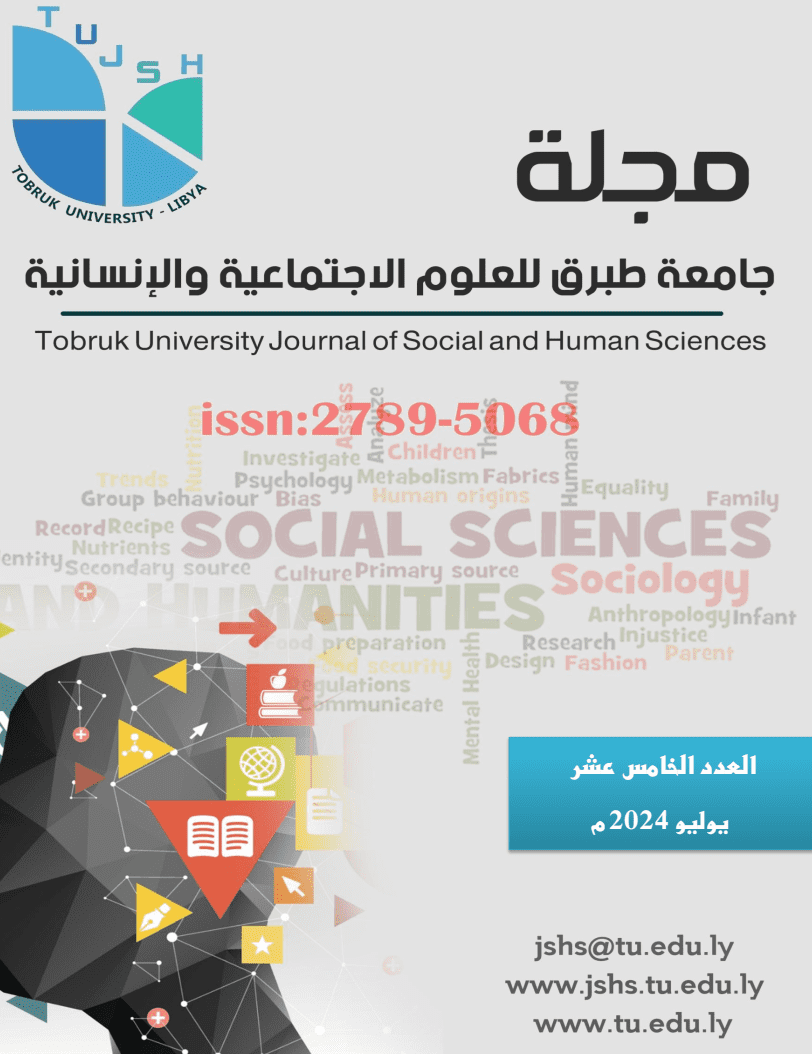Adoption in Roman law
DOI:
https://doi.org/10.64516/jfvq7391Keywords:
المجتمع, القانون, الروماني, الأسرةAbstract
In Roman law, the concept of adoption referred to a legal process through which an individual could become a member of a family without a biological connection. Adoption served various purposes in Roman society, including property transfer, lineage continuity, and the appointment of heirs. roman adoption was primarily governed by the principles of patria potestas, granting the male head of the family extensive authority and control over his descendants. Adoption was seen as a means to expand this authority and ensure the continuity of the family lineage. However, it is important to note that adoption was not limited to the elite or wealthy classes and was accessible to individuals from various social standings.
There were several recognized types of adoption under Roman law, each with its own conditions and legal consequences. The adopted individual would acquire the legal rights and obligations of a biological child within the adoptive family. They would also gain inheritance rights, allowing them to inherit the properties from their adoptive family, while losing any inheritance rights they had in their biological family. roman adoption could also have broader societal implications. It could serve political purposes, as seen in cases where emperors adopted heirs to ensure a smooth succession. It could also be used to strengthen alliances between families or guarantee the continuity of a wealthy family's name and wealth.
Downloads
References
1. Huard, Leo Albert. "The Law of Adoption: Ancient and Modern." Vanderbilt Law Review vol. 9, no. 4, June 1956, pp. 743-764. HeinOnline.
2. The Law of the Twelve Tables, Tables IV – V, https://thelatinlibrary.com/law/12tables.html and Crawford, Michael. "The Roman Law of Adoption." Zeitschrift der Savigny-Stiftung für Rechtsgeschichte: Romanistische Abteilung, vol. 127, no. 1, 2010, pp. 102-13and .Watson, Alan. Roman Law and Comparative Law. Oxford University Press, 1991,p. 131. And Frier, Bruce W., and Thomas A. J. McGinn. A Casebook on Roman Family Law. Oxford University Press, 2004.pp.304-313.
3. Crawford, Michael,op.cit, p. 115.
4. Basilika (Book 9, Title 30, Law 2-3), and Watson, Alan, op.cit, p. 131.
5. Frier، Bruce W.، and Thomas A.J McGinn, op.cit, p.367.
6. Crawford, Michael, p.119.
7. Frier، Bruce W,op.cit, p.367.
8. The Enactments Of Justinian.The Code.Book VI(C. 6.17.1-2), Scott, The Civil Law, XIII-XIV, Cincinnati, 1932.
9. Justinian.The Code , (C. 6.17.2)
10. Justinian.The Code, (C. 6.17.4)
11. Justinian.The Code, (C. 6.17.5)
12. The Digest Or Pandects, Book I,ti7.8.9, S. P. Scott, The Civil Law, II, Cincinnati, 1932.
13. Justinian.The Code, (C. 6.17.3)
14. Justinian.The Code, (C. 6.20.1)
15. The Enactments of Justinian,The Digest Or Pandects, Book I, ti7.2. S. P. Scott, The Civil Law, II, Cincinnati, 1932.
16. Institutes, 1.138 and Codex Justinianus, (C. 6.21.1) Codex Justinianus (c6.21.2) and The Digest Or Pandects, Book I, And (C. Th. 5.6.1).
Titus Livius, History of Rome, 8.14, translated, with notes and illustrations, by. D. Spillan. York Street, Covent Garden, London. Henry G. Bohn. John Child and son, printers. 1857.
The Institutes of Justinian,1.tit.11.10, Translator: J.B. Moyle, Release Date: April 11, 2009. https://www.gutenberg.org/files/5983/5983-h/5983-h.htm#link2H_4_0012
Lintott, A, The Constitution of the Roman Republic. Oxford: Oxford University Press, 1999,pp. 65,102,313. DOI: https://doi.org/10.1093/oso/9780198150688.003.0006
Watson, A, The Law of Persons in the Later Roman Republic. Oxford: Clarendon Press, 1971,pp. 21,86,136.
Suetonius Tranquillus, The Lives of the Twelve Caesars, The Lives of the Caesars" (2.2) L. C. L,
.1914
Tacitus, The Annals (11.4), Alfred John Church. William Jackson Brodribb. Sara Bryant. edited for Perseus. New York. : Random House, Inc. Random House, Inc. reprinted 1942.
Dio Cassius, Roman History, (68.4.1) Vol. VIII, L. C. L, 1925.
Cassius Dio, op.cit, (57.14).
Shaun Tougher, Imperial Families: The Case of the Macedonians(867-1056),'Approaches to the Byzantine Family, Birmingham Byzantine and Ottoman Studies',ed Leslie Brubaker, Shaun Tougher Vol14, Routledge, 2016.
Demetrios Chomatenos, (Basilika Commentary on the Basilika, Book 9, Title 30, Law 1)
Justinian.The Code, (C. 6.17.3)
Justinian.The Code, (C. 6.20.1) and Codex Theodosianus (C. Th. 5.10.6)
Codex Theodosianus (C. Th. 5.10.5)
Justinian.The Code, (C. 6.17.5) and (C. Th. 5.10.4)
Justinian.The Code, (C. 6.20.2)
The Digest, 1.tit.7.
The Institutes of Justinian,1.tit.9-11
The Twelve Tables, Tables IV – V, op.cit.
The Institutes of Justinian,1.tit.11.4.
The Institutes of Justinian,1.tit.11.12.
THE DIGEST OR PANDECTS, Book I, ti7.2.
The Institutes of Justinian,1.tit.11.
The Digest, 1.tit.7. and John Haldon, Towards a Social History of Byzantium, The Social History of Byzantium, (ed):John Haldon, Blackwell Publishing Ltd, 2009, pp. 1-30. DOI: https://doi.org/10.1002/9781444305906.ch1
محمد دسوقي محمد, التبني في المجتمع البيزنطي دراسة في العلاقات الاسرية, مجلة بحوث الشرق الأوسط, م,6 العدد(44), 2018,ص ص 25-68. DOI: https://doi.org/10.21608/mercj.2018.53125
Burtsell, Richard. "Canonical Adoption." The Catholic Encyclopedia. Vol. 1. New York: Robert Appleton Company, 1907. <http://www.newadvent.org/cathen/01147b.htm>.
The Ordonnance de Blois: A legal document that established the legal procedures and requirements for adoption in France in 1579. http://lecahiertoulousain.free.fr/Textes/ordonnance_1579_blois.html
Downloads
Published
Issue
Section
License
Copyright (c) 2024 ما هر شعاب عمار عبدالسلام (Autor/in)

This work is licensed under a Creative Commons Attribution 4.0 International License.








